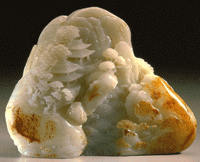CAUSES FOR MISTAKEN ATTRIBUTION
Ignoring the exaggeration similarity of a painting to the works attributed to a master contributes to mistaken authorship. An intensive study of period features and specific influences would highlight the transformation of an early style and incorporated in a later style.
Reading a signature and seals on the painting without verification leads to mistaken attribution. A proper identification of signatures and seals would shed light on the name and a brief biography of the inscriber or painter. An assessment of a painter’s period of activity often coincides with the art historian’s estimation of his style.
Arriving at attribution without consulting literature biography and conducting stylistic analysis is mistaken, because a careful examination of a painting and its historical references, personal elements and content of inscription often position the painting in a more accurate historical moment, contributing to a correct attribution.
VERIFICATION OF ATTRIBUTION
Attribution refers to an art professional’s efforts on understanding the artistic personality (genuine vs. spurious, mature vs. youthful) in two terms: “initiative style” vs. “adapted in imitation.” It engages the most rigorous visual biography of the master that we can assemble to whom a painting is attributed.
Asking attribution-related questions before arriving at attribution is critical. “A genuine work of the period by the master?” “What are the characteristics associated with ‘early’ and ‘later” style of the master?” “A genuine work of the period of mediocre and poor quality or works with characteristics typical of the master?” “An imitation, copy or forgery of the attributed master, contemporary with, close in time to, or somewhat later than his period of activity?”
AUTHENTICATION METHOD
A comparative study of a painting’s calligraphy and painting techniques with genuine works of similar subject matter by the attributed artist contributes to attribution. After much weighing of the hypothetical possibilities and circumstances which may have faced the artist in the process, arriving at the correct attribution is possible.

